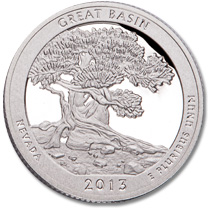
Fort McHenry National Monument and Historic Shrine
Located on Locust Point peninsula in Baltimore (MD) Harbor, Fort McHenry National Monument and Historic Shrine was the site of a key battle in the War of 1812 and the birthplace of our National Anthem. The star-shaped fort survived 25 hours of continuous bombardment from British ships on September 13-14, 1814 – and the sight of its grand 30’ x 42’ American flag still flying at dawn on the 14th inspired Francis Scott Key to write the poem that became The Star-Spangled Banner.
The Baltimore fort is named after James McHenry, secretary of war from 1796-1800 under presidents George Washington and John Adams. The fort has served a variety of roles through its history – as a military prison during the Civil War, U.S. Army hospital during the First World War, and Coast Guard base during the Second World War.
Today, Fort McHenry holds the distinction as the only site in the National Park System designated as both a National Monument and Historic Shrine. Each year, thousands of people visit this “birthplace of our national anthem” – where they enjoy daily ranger talks during the summer, and early 19th century drill, musket and artillery demonstrations by the Fort McHenry Guard on summer weekends. The biggest special event occurs each September, when Defenders’ Day celebrates the successful defense of the city by Fort McHenry in September of 1814.
More information on Fort McHenry National Monument and Historic Shrine.
The new Perry’s Victory and International Peace Memorial Quarter, the seventeenth issue of the series, and second design for 2013, will soon be in circulation. On Saturday, April 20th, the official launch ceremony for the new Perry’s Victory quarter will take place on the lower plaza of the memorial at the Put-in-Bay, Lake Erie, Ohio.
With only 138 residents, the tiny village of Put-in-Bay, located on South Bass Island, can only be reached by ferry. After the launch ceremony on the 20th, the mint will hold a coin exchange, and the public can trade cash for $10 rolls of the new quarters featuring the memorial column in the background, with a statue of Commodore Perry in the foreground. The 2013 series quarters honor some of America’s more interesting national forests, parks and memorials – White Mountain, Perry’s Victory, Great Basin, Fort McHenry and Mount Rushmore. Add the new Perry’s Victory and International Peace Memorial Quarters to your collection now.

Great Basin National Park Quarter Design
On December 10, 2012, the U.S. Mint revealed the final design for the Great Basin National Park quarter. As the third release for 2013, this beautiful quarter will feature an ancient Bristlecone pine, and the rocky hillside it grows on within the Nevada park.
Located on the sides of mountain ridges above 10,000 feet, these trees are often twisted because they are exposed to the wind and harsh elements. In spite of drought, they continue to slowly grow. Because of their slow growth rate, their wood is very dense which makes it resistant to insects and disease.
The quarter’s reverse design was created by U.S. Mint’s Artistic Infusion Program Associate Designer Ronald D. Sanders. The reverse inscriptions read, name of the site: GREAT BASIN, NEVADA, year of issue: 2013 and the motto: E PLURIBUS UNUM.
This handsome quarter is a perfect match for the 2006 Statehood Quarter, which also featured Nevada, the park’s home state. As 18th in the series overall, the Great Basin quarter will be the third coin for 2013.

U.S. Mint art for the top contenders for the Great Basin National Park quarter design
In the fall of 2011, both the Citizens Coinage Advisory Committee (CCAC) and the Commission of Fine Arts (CFA) reviewed designs for the 2013 Great Basin quarter. All designs featured the ancient bristlecone pine as a central element, and two showed mountains in the background, while another showed a Big Horn Sheep along with the pine. Designs were praised, but the only concern was the amount of detail for the pine needles and how it would render on the coin.
As some of the world’s oldest living organisms, bristlecone pines deserve a spot on the Great Basin National Park quarter. In 1964, Prometheus, the oldest known tree on earth, was discovered only after it had been cut down. Its rings revealed Prometheus was about 4,900 years old. This meant the tree was already growing when Sumer in Mesopotamia was at its height and construction began on Stonehenge in England and the Great Pyramid in Egypt.
Whether it’s a visit to the arid, high desert, the short hike to the ancient bristlecone pine groves or a journey into the Lehman Caves on a 60-90 minute tour, this amazing park has something for everyone.

Mountains in Great Basin National Park
Located in central Nevada in the Snake Mountains, Great Basin National Park is one of America’s newest parks. In 1986, President Regan set aside 77,180 wildness acres as a national park. This acreage also included Lehman Caves, which had already been designated a national monument in 1922.
True to its name, the Great Basin holds in all precipitation from snow melt to rain, preventing it from draining to the ocean. Water then finds its way into underground aquifers or evaporates over time. The park is a study in contrasts. Visitors can explore the dry desert, Lehman Caves and Nevada’s only glacier – a survivor from the ice age – at the base of 13,063-foot Wheeler Peak. Plus, you can see some of the world’s oldest living things – bristlecone pines – growing on mountains above 10,000 feet.




